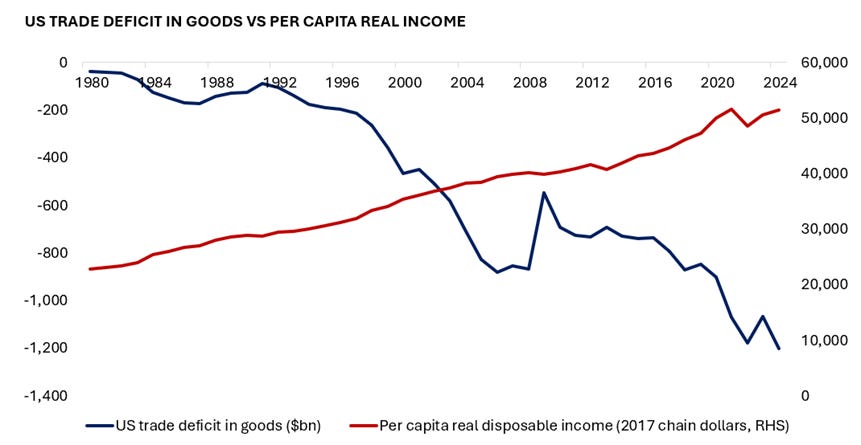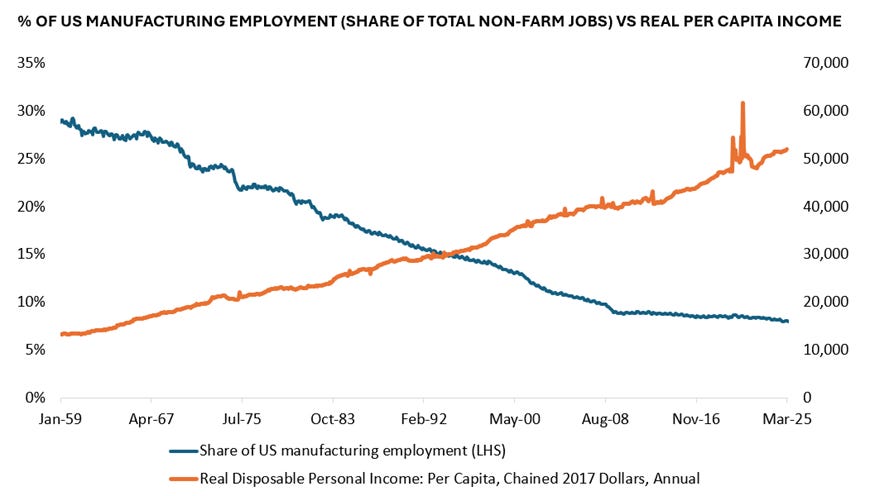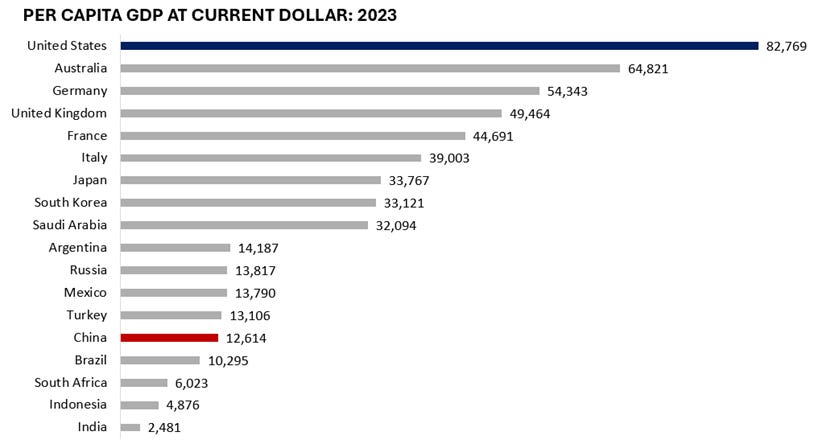The Court of International Trade and the D.C. District Court have ruled against Trump’s use of the International Economic Emergency Powers Act (IEEPA) to levy tariffs. The third strike is coming from the Court of Economic Common Sense.
In response to the first judicial ruling, a White House spokesperson said, “It is not for unelected judges to decide how to properly address a national emergency.”
That “national emergency”?
According to the White House, persistent US trade deficits with other countries have created “a national emergency that has decimated American communities, left our workers behind, and weakened our defense industrial base – facts that the court did not dispute.”
The Court of Economic Common Sense is now in session, and is ready to rule on whether US goods trade deficits are in fact a national emergency.
The chief justice notes that the US has run trade deficits every year since 1976. Why is this suddenly a “national emergency”?
Since 1976, the size of the US economy has increased by 265% in real (inflation-adjusted) terms, US manufacturing output rose 151%, and real income increased by 139%. Does this constitute a national emergency?
The Court of Economic Common Sense is aware that as the size of the US trade deficit has increased, per capita real income has continued to rise.
The chief justice also understands that real per capita income in the US has continued to rise despite a steady decline in the manufacturing share of total non-farm employment. (Service sector wages are, on average, now higher than wages for workers in manufacturing.)
As a result, despite persistent deficits in goods trade, on a per capita GDP basis, the US is by far the richest major country in the world. Is this a “national emergency”?
As economists at the St. Louis Fed explain, “The US ran persistent trade deficits for large parts of its history, just as it does today. Trade deficits did not inhibit US development, however, and may have even facilitated industrialization as the US could import capital goods to improve its own manufacturing during its first phase of industrialization.”
In contrast, the court understands that Germany has run consistent goods trade surpluses since the 1950s. But, Germany's GDP growth and income growth rates have lagged behind that of the US, and current per capita GDP in Germany is one-third lower than in the US.
Some American communities are, as the White House spokesperson points out, in distress. But, that distress is not due to the US trade deficit.
The chief justice of the Court of Economic Common Sense hereby rules that the administration should be focused on solving problems that will actually help those communities in distress, not on raising tariffs, which are taxes that would be paid for by American consumers and companies in those communities, adding to, rather than alleviating their distress.
Andy Rothman







